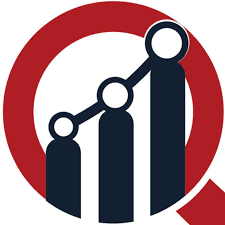
Introduction
Pervaporation, a membrane separation process, has gained significant attention in recent years for its efficacy in separating liquid mixtures. This process involves the selective permeation of one component from a liquid mixture through a membrane, followed by its evaporation and subsequent condensation on the permeate side. The growing interest in this technology is driven by its applications in various industries, including chemical processing, water treatment, and biofuel production. This article explores the pervaporation market, examining its current state, key drivers, challenges, and future prospects.
Market Overview
The pervaporation market is a niche yet rapidly expanding segment within the broader membrane technology industry. As of 2023, the market is valued at approximately USD 1.2 billion and is projected to grow at a compound annual growth rate (CAGR) of around 8% over the next five years. The growth is fueled by increasing demand for efficient separation processes in industrial applications, stringent environmental regulations, and advancements in membrane technology.
Get sample copy of report at: https://www.marketresearchfuture.com/sample_request/21827
Key Drivers
-
Industrial Demand: One of the primary drivers of the pervaporation market is the growing demand for efficient and cost-effective separation processes in various industries. In the chemical industry, pervaporation is used to separate azeotropic mixtures and remove organic solvents from aqueous solutions. This process is preferred over traditional distillation methods due to its lower energy consumption and higher selectivity.
-
Environmental Regulations: Stringent environmental regulations regarding waste management and pollution control have led industries to adopt cleaner and more efficient separation technologies. Pervaporation, with its ability to selectively remove contaminants and recover valuable components, aligns well with these regulatory requirements, thus driving its adoption.
-
Advancements in Membrane Technology: The development of advanced membrane materials with improved selectivity, permeability, and durability has significantly enhanced the performance of pervaporation processes. Innovations such as hybrid membranes, incorporating both organic and inorganic materials, have broadened the scope of pervaporation applications, making it more competitive with other separation techniques.
-
Water Treatment: In the water treatment sector, pervaporation is increasingly being used for the removal of volatile organic compounds (VOCs) from water. This application is particularly relevant in the context of growing concerns over water pollution and the need for sustainable water management solutions.
-
Biofuel Production: The biofuel industry presents another significant growth avenue for the pervaporation market. Pervaporation is employed to dehydrate bioethanol and biobutanol, improving their purity and making the production process more energy-efficient. With the global push towards renewable energy sources, the demand for biofuels and, consequently, for pervaporation technology is expected to rise.
Speak to analyst: https://www.marketresearchfuture.com/ask_for_schedule_call/21827
Challenges
Despite its numerous advantages, the pervaporation market faces several challenges that could hinder its growth:
-
High Initial Costs: The initial investment required for setting up pervaporation systems can be substantial. This includes the cost of membranes, modules, and associated infrastructure. For small and medium-sized enterprises, these costs can be prohibitive, limiting the widespread adoption of the technology.
-
Membrane Fouling: Membrane fouling, caused by the deposition of particles, organic matter, and other impurities on the membrane surface, is a significant challenge in pervaporation processes. Fouling reduces membrane efficiency, increases operational costs, and necessitates frequent maintenance and replacement.
-
Limited Awareness and Expertise: The adoption of pervaporation technology is often hindered by limited awareness and expertise among potential users. Many industries are more familiar with conventional separation methods and may be hesitant to invest in newer technologies without a clear understanding of their benefits and operational requirements.
Key Companies in the Pervaporation market include
GFT
Dupont
Lurgi
MegaVision Membrance
JIUWU HI-TECH
Browse full Report: https://www.marketresearchfuture.com/reports/pervaporation-market-21827
Future Prospects
The future of the pervaporation market looks promising, with several trends and developments poised to drive its growth:
-
R&D Investments: Increased investment in research and development is expected to yield new membrane materials with enhanced performance characteristics. Innovations in nanotechnology, for instance, could lead to the development of membranes with superior selectivity and permeability, further expanding the application range of pervaporation.
-
Integration with Other Technologies: The integration of pervaporation with other separation processes, such as distillation or adsorption, can enhance overall process efficiency and reduce energy consumption. Hybrid systems that leverage the strengths of multiple technologies are likely to gain traction in the coming years.
-
Sustainability Focus: As industries increasingly prioritize sustainability, pervaporation’s energy efficiency and ability to facilitate waste recovery will become more attractive. This focus on green technologies will drive further adoption of pervaporation in various sectors.
-
Expanding Applications: The pervaporation market is set to benefit from the exploration of new applications, such as in the pharmaceutical and food industries. For example, pervaporation can be used to concentrate and purify active pharmaceutical ingredients or to remove unwanted flavors and odors from food products.
Browse Related Reports:
Cold Insulation Market Size, Share, Growth | Report, 2030
Silicon Carbide Market Size, Share & Analysis Report 2032
Chlor Alkali Market Size, Share & Global Forecast Report 2032
Rare Earth Metal Market Size, Share & Forecast Report 2032
Glycerin Market Size, Share and Forecast Report 2030
About Market Research Future:
At Market Research Future (MRFR), we enable our customers to unravel the complexity of various industries through our Cooked Research Report (CRR), Half-Cooked Research Reports (HCRR), Raw Research Reports (3R), Continuous-Feed Research (CFR), and Market Research Consulting Services. MRFR team have supreme objective to provide the optimum quality market research and intelligence services to our clients. Our market research studies by Components, Application, Logistics and market players for global, regional, and country level market segments, enable our clients to see more, know more, and do more, which help to answer all their most important questions.
Contact Information:
Contact: Market Research Future® 99 Hudson Street,5Th Floor New York, New York 10013 United States of America Phone: +1 628 258 0071(US) +44 2035 002 764(UK) Email: [email protected] Website: https://www.marketresearchfuture.com
Tags:
Research Newswire, English










